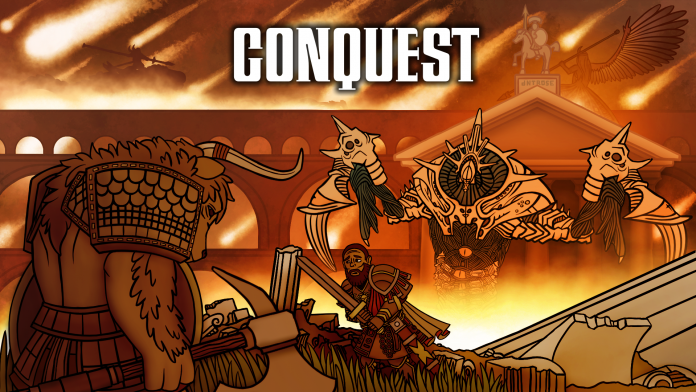One of the big selling points for Conquest is that it’s two games for the price of one, using the same minis to play both The Last Argument of Kings (TLAOK) and First Blood (FB). But I’ve been playing in the world of Conquest longer than most, and the idea of playing FB basically didn’t even occur to me, even when challenged on it.
For me, I didn’t need another big selling point for the game. I wanted something that was large scale and deeply strategic, offering enticing lore and with models that I’d be excited to paint; and I looked no further than TLAOK. Why would I ever want to take a small number of models away from that epic scale of battle to play what was surely going to be a less well-formed version of the game I loved?
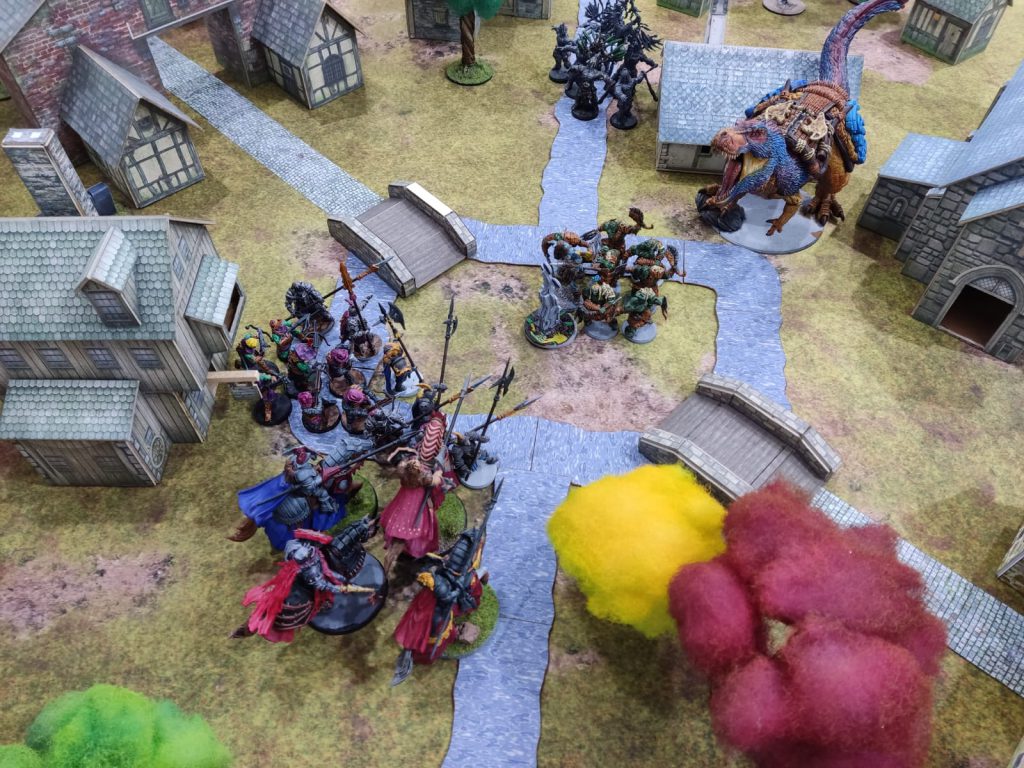
It was at the London Grand Tournament last year that I started to think a bit differently. I was carefully pushing my Stryx across the battlefield as they charged into a unit of some sort of archers and, as usual, those flapping wings started interfering with the upward-angled bows. My opponent and I entered into the dance of carefully rotating each individual model in its stand to allow them to sit flush without risking snapped models and chipped paintjobs.
I commented something along the lines of: “And this is why you don’t glue your models into the stands,” at just the right point for a Para Bellum employee to overhear and join in the conversation. He agreed with me: “Yes, I can’t understand why anyone would take away their ability to play an entire second game.”
That wasn’t what I meant at all, but his certainty about the folly of missing out on what was on offer got me thinking. Had I written it off too easily? The chance presented itself for me to give FB a try earlier this year, and I thought I’d go through my first impressions and take-aways here.
Fundamentally Familiar
Migrating from TLAOK to FB was as smooth as it could have been, really. Creating a list was relatively intuitive, especially with the excellent Para Bellum app, and there weren’t any of the warband-related technicalities around list-building so I could just select my favourite units and get going. No mainstay and restricted units here, just a pick-and-mix of models in my cupboard; list-building the easy way.
All of the stat blocks and basic rules were also extremely familiar. While some of the stats looked a bit different and some of the special rules had a slightly different effect I barely had to learn any more jargon. Rolling the dice low against predictable target numbers was exactly the same, and the sequence of attacks from a clash, defence rolls and morale tests made the whole process very easy to learn.
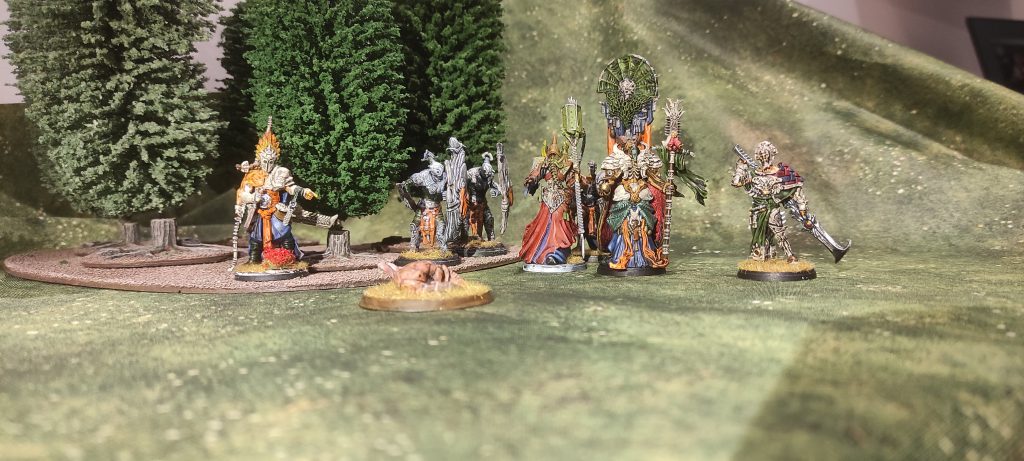
In fact, gameplay as a whole was pretty similar, with the command stack operating as normal. If you already play TLAOK you’re not in for any nasty surprises as far as the basic building blocks of the game are concerned. It feels true to the heart of the Conquest experience, literally playing out a smaller-scale version of the full-scale battles seen in TLAOK.
Technical Differences
But FB isn’t only a smaller-scale game. Many of the attributes of TLAOK exist purely because of the formation of regiments. An individual doesn’t have to wheel in the same way that a regiment does, for example, so there were always going to be differences, and here’s where FB starts to divert from the path I’d been on for so long.
We might start with the way the game opens. A TLAOK gameboard is relatively easy to set up: Chuck down some terrain, now let’s get going! But FB operates the same way most other wargames do, with a deployment phase, and depending on the scenario the enemy can feel ridiculously close in comparison to the full four-foot depth of the TLAOK battlefield. By its nature the FB table feels much more compact, and the presence of the entire army on both sides at the outset of turn one exacerbates that.
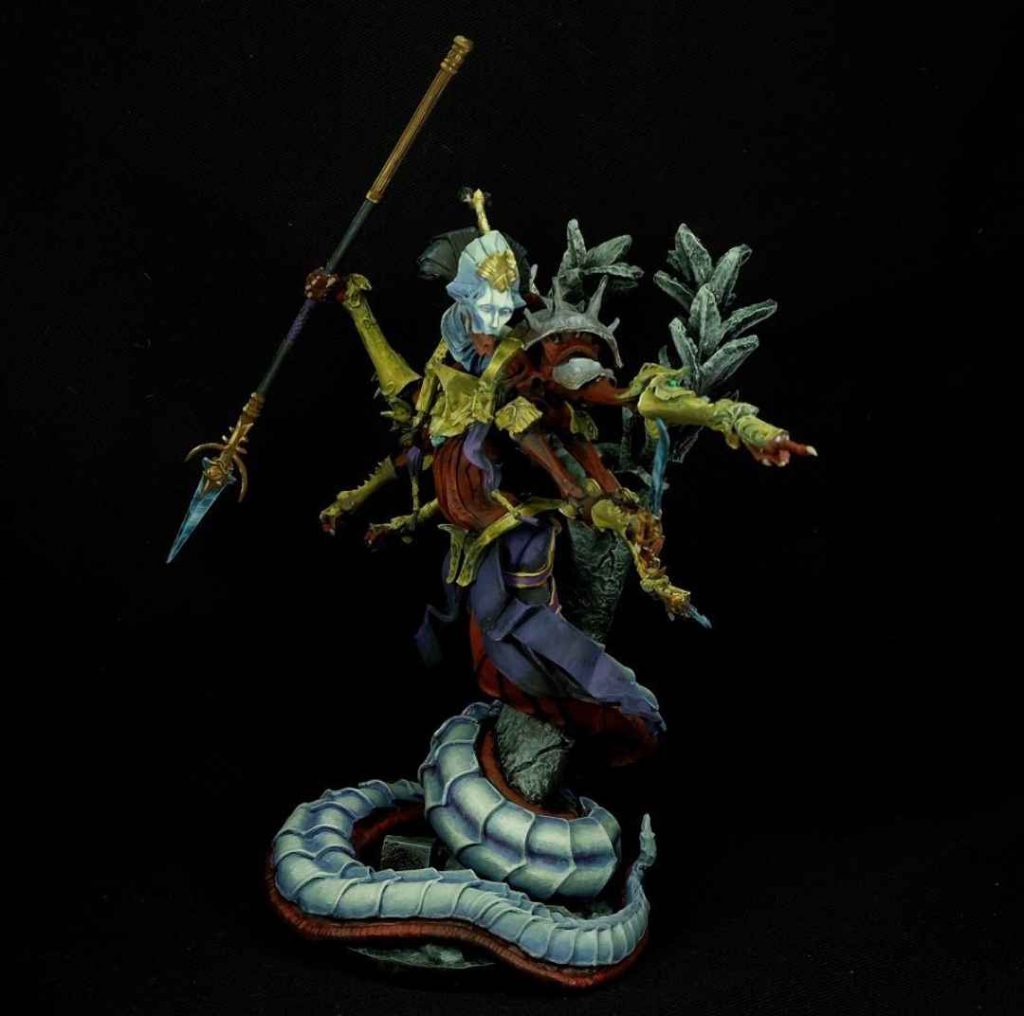
This has a tendency to accelerate the game. In TLAOK it’s quite possible you’ll be in turn five and a heavy unit or two will still be preparing to enter combat at all, but you’ll have no such luck in FB, where you’re likely to be rolling dice by the end of the first round! As a result units do die and the game as a whole is significantly quicker to finish. While TLAOK tends to wrap up in 2-2.5 hours, FB is closer to 60 minutes.
Charging still exists and is as critical as it is in TLAOK, but the mechanics are different. No more figuring out how stands can wheel and maximise contact, now they barely need to touch in some cases in order to be able to attack, and the unit exists simultaneously as a whole and as the individual models within it, which brings a need to think differently.

There’s also an alternative approach to the concept of the Duel, which still sort-of exists but which brings in an entourage in the form of a retinue that those of us who remember TLAOK version 1.0 will remember with a wistful gaze.
More fundamentally, the way objectives are scored is different in FB, forcing the investment of a huge amount of effort and time to taking down a single objective marker, creating an interesting tension for decision-making that feels different from TLAOK. In TLAOK the game can be won through good positioning and a bit of luck; cross that halfway line at the right moment and it might decide the game. But in FB if you concentrate too hard on trying to score that unit might have died for nothing.
Scorelines and Storylines
Perhaps the most visibly obvious difference, however, is how much of the FB table is taken up with terrain. TLAOK battlefields need to be pretty sparse to cater for the low maneuverability of the ranked-up regiments but FB suffers from no such challenge. Terrain therefore plays a different sort of role in dictating the play, with models now able to climb over rocks and up ladders, opening up the opportunity for indoor fights, an idea that’s completely foreign to the world of scale that TLAOK brings.

At a personal level this simple difference was perhaps the biggest difference-maker in the entire game. FB is still strategic in a similar way to the TLAOK approach, requiring skill in list-building, positioning and turn-by-turn tactical decision-making, but feels extremely different in the playing. A game of TLAOK can feel in many ways like a game of chess. The mechanics of the game take centre-stage, with my opinions on the game built purely from the anticipated final scoreline.
FB, on the other hand, lends itself much more to narrative play. My Mimetic Assassin, who barely gets a look-in on a TLAOK table, performs glorious leaps through windows and behind rocks, while the brave retinue of a Jarl make the ultimate sacrifice protecting their lord from an oncoming arrow. The scoreline is still present, and I’m just as competitive as ever, but the storyline of the game feels much more accessible somehow.
Embracing the Extremes
I’m not the most strategic of TLAOK players, more often doing what feels fun rather than what will maximise my chance to win the game, but even I can recognise that some units are stronger than others. Within a TLAOK army list it’s relatively straightforward to pick apart the value of a particular unit: The more points allocated to it, the better it’s going to be at whatever it does.
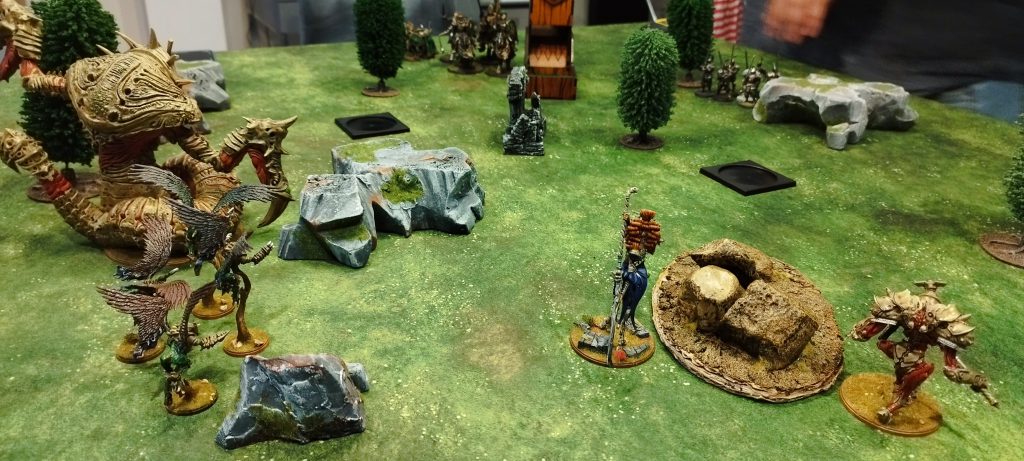
The same is true of FB, but it’s as if they took the normal distribution and stretched it out, making the poor units even worse and the most terrifying to face even more epic. Let’s look at the W’adhrun as an example.
A set of 12 Braves in TLAOK (three stands) will set you back 120 points, but in FB that same 12 would cost 210 points. No problem, there’s a bit of an exchange rate that means fewer models; appropriate for a skirmish game. At the other end of the spectrum, however, with no Tontorrs in FB an Apex Predator will put you back 440 points, in comparison to the 190 of TLAOK. That makes the threatening monster seriously expensive, but the brutality of FB is such that it is never going to die unless something like a Siegebreaker Behemoth is sent in its direction.
This really brings out the lore of Eä for me. There’s a bit of a response when that T-rex is placed on the TLAOK table, but it’s only really calling for a coordinated attack to take it down. On the FB scale, however, it’s a proper dinosaur having escaped from Jurassic Park and the only reasonable response is to run away as fast as you can.
Conclusions
My overall takeaways from having played FB a bunch of times now are that it’s a really fun game. Far from being simply a scaled-down version of TLAOK it’s all of the great mechanics and gameplay of TLAOK without the complexities inherent in rank-and-file units.
I love the new experience it gives me of Eä. I love the ability I have to get to know the characters of my units better. I love the fact I can carry my army in a handbag rather than a trailer. I love the fact I can play a game in an evening and still get to bed at a reasonable hour.
I’m looking forward to playing more FB in the coming months, and if you’ve been enjoying TLAOK I’d encourage you to give it a go as well. You might enjoy it. And if it’s too late and your models are all glued in, don’t blame me when this becomes the catalyst for buying into a new army…
As ever if you want to get 10% off and support Goonhammer, make your Conquest purchase by clicking here for US/Canada or here for EU/rest of world. You’ll also need to enter code “goonhammer” at checkout. Look, we don’t make the rules, that’s just how it works!
Have any questions or feedback? Drop us a note in the comments below or email us at contact@goonhammer.com. Want articles like this linked in your inbox every Monday morning? Sign up for our newsletter. And don’t forget that you can support us on Patreon for backer rewards like early video content, Administratum access, an ad-free experience on our website and more.
